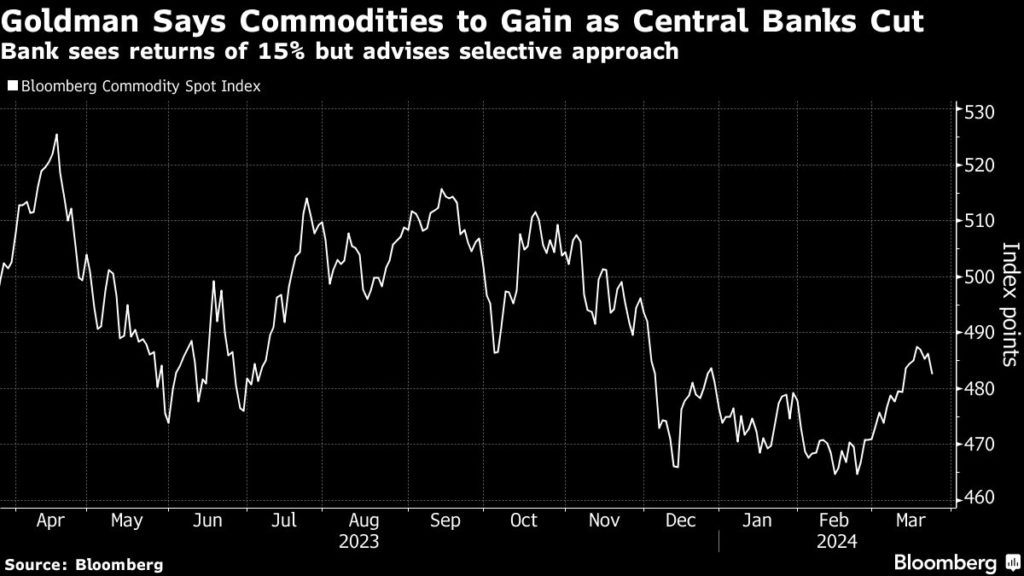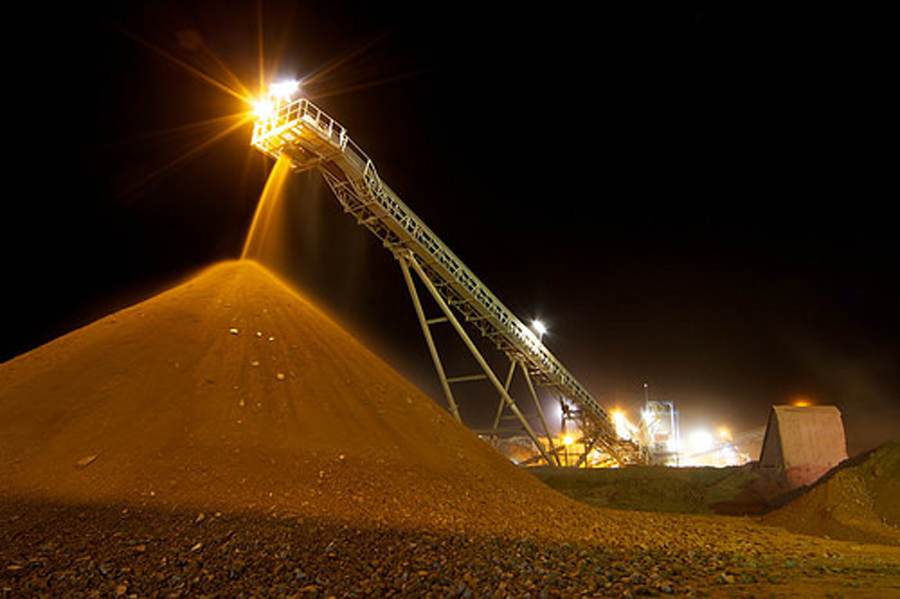Goldman says commodities to gain as central banks cut rates

Commodities will advance this year as central banks in the US and Europe move to reduce interest rates, helping to support industrial and consumer demand, according to Goldman Sachs Group Inc.
Raw materials may return 15% over 2024 as borrowing costs come down, manufacturing recovers, and geopolitical risks persist, analysts including Samantha Dart and Daan Struyven said in a March 24 note. Copper, aluminum, gold and oil products may climb, according to the bank, which also stressed the need for investors to be selective as gains wouldn’t be universal.

Commodities have made a modest advance in the first quarter, with crude strengthening, gold hitting a record, and copper topping $9,000 a ton. Policymakers at both the US Federal Reserve and European Central Bank have signaled their intention to reduce borrowing costs this year as inflation ebbs. In addition, China has flagged further support for its recovery.
“We find that US rate cuts in non-recessionary environments lead to higher commodity prices, with the biggest boost to metals (copper and gold in particular), followed by crude oil,” the analysts said. “Importantly, the positive impact on prices tends to increase with time, as the growth impulse from looser financial conditions filters through.”
Goldman’s cautiously bullish outlook echoes comments from other market watchers. Commodities are entering a fresh cyclical upswing aided by tighter supplies and an upturn in the global economy, Macquarie Group Ltd. said earlier this month. Jeff Currie, formerly the head of commodities research at Goldman and now at Carlyle Group LP, has also forecast gains as the Fed cuts rates. Elsewhere, JPMorgan Chase & Co. highlighted gold’s upside potential.
Among Goldman’s year-end forecasts, copper was seen at $10,000 a ton, aluminum at $2,600 a ton, and gold at $2,300 an ounce, which would be a nominal record. The base metals were last near $8,886 a ton and $2,310 a ton on the London Metal Exchange, while bullion was close to $2,167 an ounce.
“In the midterm, we continue to hold a constructive view on gold underpinned by eventual Fed easing, which should crucially reactivate the largely dormant ETF buying,” the analysts said, referring to exchange-traded fund flows.
In contrast — and highlighting its call for a selective approach — the bank remained bearish on the outlook for battery metals such as nickel, cobalt and lithium carbonate. “We believe it is too early to call a decisive end to these respective bear markets,” the analysts said.
While the Fed left interest rates unchanged last week, officials stuck with their outlook for three cuts this year. Still, a gauge of US inflation due in the coming days — the Fed’s preferred measure of underlying price pressures — probably remained uncomfortably high in February.
(By Yongchang Chin)
More News
{{ commodity.name }}
{{ post.title }}
{{ post.date }}



Comments